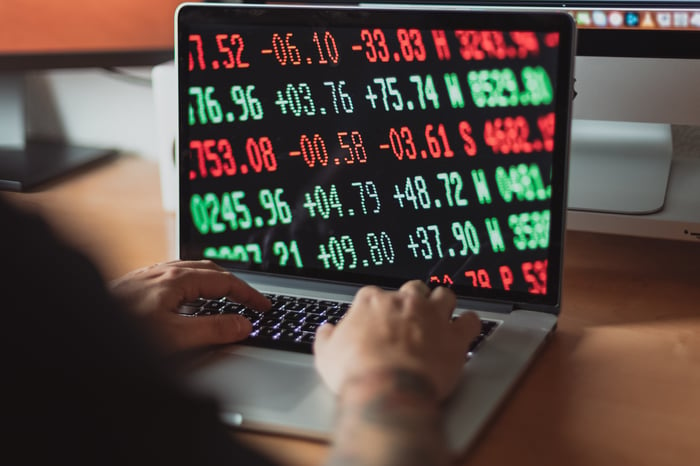Though the U.S. economy is clearly in a slump, the stock market seems to be beating to its own drum. It's often the case that stock values fall during a recession, but these days, the market is holding strong.
That wasn't the case earlier in the year, though, when stocks plunged into bear market territory as the severity of the COVID-19 pandemic really set in. And like it or not, there's a good chance we'll witness another stock market crash before the year is out.
If you're worried about investing during a recession, you're no doubt in good company -- but that doesn't mean you should pass up the opportunity. And here's one good strategy you can employ that just might put your mind at ease, all the while helping you make money at a time when others might be shying away from investing.

Image source: Getty Images.
How dollar-cost averaging works
Dollar-cost averaging is a smart investing strategy in general, and it can be especially useful during a recession. In short, dollar-cost averaging is the practice of investing a fixed amount at predetermined intervals. You might, for example, decide to invest $300 every other week, or $500 a month, depending on what your financial situation allows for.
The benefit of dollar-cost averaging is that you're taking the stress and guesswork of timing the market (which really doesn't tend to work) out of the picture. Rather than chasing lows, you're investing consistently, and via that process, you're more likely to buy at what ends up being the right time.
What makes dollar-cost averaging such a valuable strategy during a recession is that it plays on the fact that markets tend to be volatile, and so by investing at intervals, you may end up with a lower average stock price at the time of purchase than you would with a different strategy. Also, dollar-cost averaging takes fear out of the equation, and at a time like this, that's important.
Many people shy away from investing in general, but particularly during recessions, because they're worried about buying at the wrong time and losing money. But with dollar-cost averaging, that day-to-day worry goes away, because you're simply following a strategy you've committed to.
How to invest with dollar-cost averaging
If dollar-cost averaging is something you're interested in, you can go about it in a couple of ways. First, you could sign up for your employer's 401(k) plan. That way, you'll have money deducted from your paychecks regularly, which will then go into your retirement account. Of course, you'll need to review your plan's options and make sure you're investing in 401(k) funds that align with your personal risk tolerance and strategy, but that way, you'll be putting money in at regular intervals.
Another option is to find a brokerage account that will allow you to set up an automatic buying plan. Or, you could simply add money to your brokerage account manually, but as is the case with a 401(k), automating the process means you're more likely to stay on track.
Is it safe to invest during a recession?
Dollar-cost averaging makes investing during a recession a less risky prospect. That said, if you're going to invest at a time like this, make sure you have a fully loaded emergency fund first. Specifically, aim for a good six months' worth of living expenses in the bank. Having that cash on hand is key, because without it, you may have no choice but to liquidate some investments if your job is taken away or if money gets tight. And being forced to sell off investments at the wrong time could lead to permanent losses.
But if you have that emergency stash of money, it really does pay to invest even during periods of volatility. As long as you have the right outlook (meaning, you're not looking to get rich quick) and adopt the right approach, you could wind up making a lot of money in the long run.




